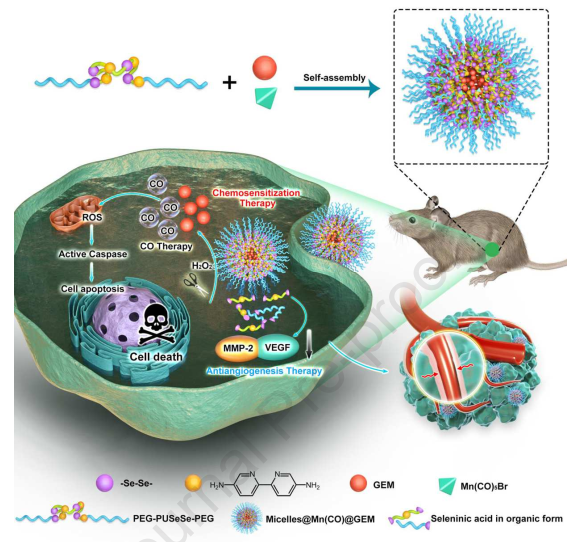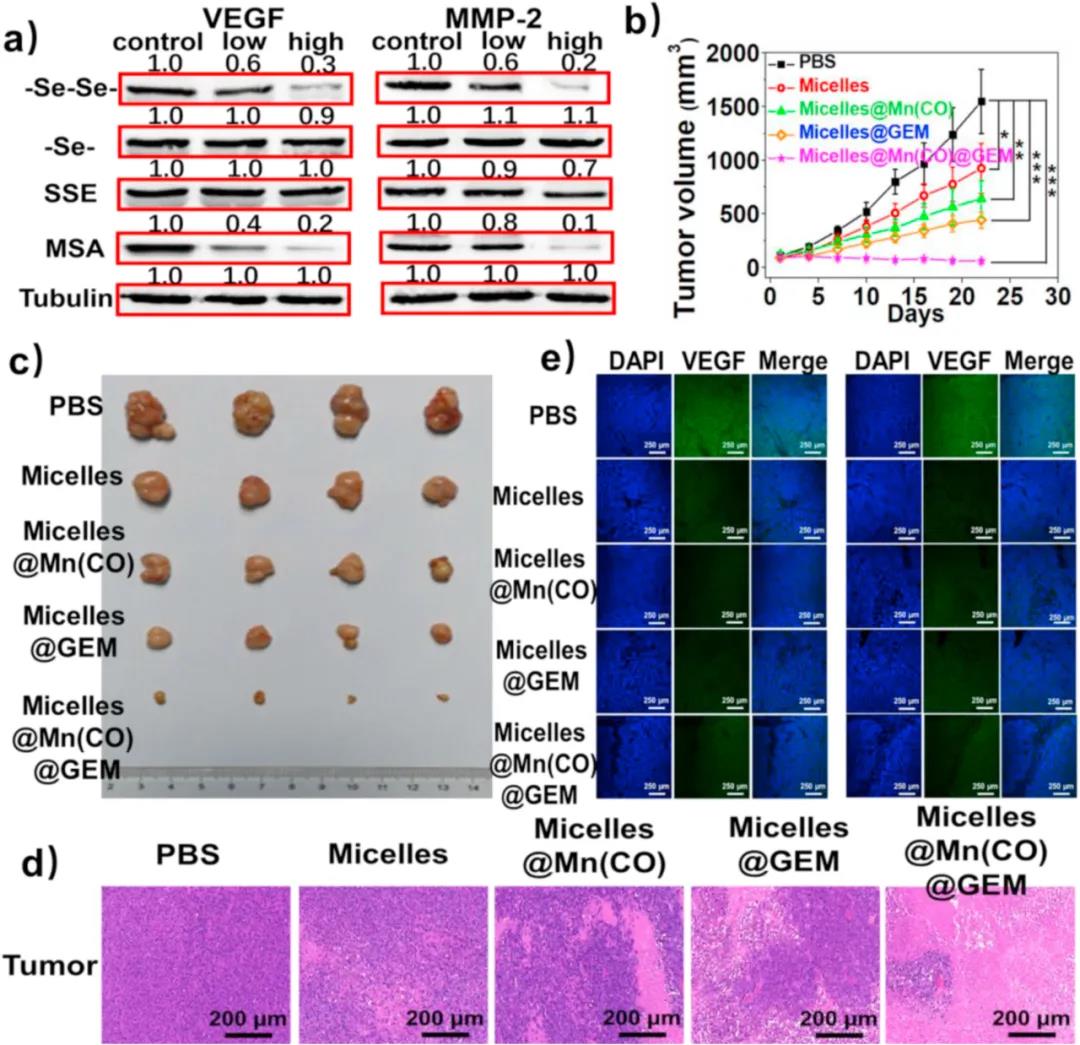Huaping Xu Biomaterials of Tsinghua University: H2O2 responsive polymers for CO/chemosensitization/anti-angiogenesis co-therapy
QQ Academic Group: 1092348845
Detailed
Carbon monoxide (CO) therapy and anti-angiogenesis therapy (AAT) are considered to be two effective cancer treatments. However, their tumor targeting is poor and will produce inevitable side effects, so their clinical application also faces many obstacles. In view of this, Professor Xu Huaping of Tsinghua University has developed a micelle that responds to H2O2 and contains diselenide, thereby integrating CO therapy, chemosensitization therapy and AAT into a single system.

Key points of this article:
(1) Under the action of H2O2 in the tumor, CO and gemcitabine (GEM) will be released in situ from the micelles, thereby reducing the side effects of treatment. Subsequently, CO can significantly enhance the chemotherapeutic effect of GEM by increasing the level of reactive oxygen species (ROS) in gastric cancer AGS cells.

(2) In addition, the diselenide bonds in micelles will be oxidized into organic form of selenate, thereby inhibiting the expression of vascular endothelial growth factor (VEGF) and matrix metalloproteinase-2 (MMP-2) to achieve AAT. Therefore, this research provides a new solution for combining CO therapy with chemotherapy sensitization therapy and AAT to achieve a synergistic treatment with good biocompatibility.

references:
Jichun Yang. et al. CO/chemosensitization/antiangiogenesis synergistic therapy with H2O2-responsive diselenide-containing polymer. Biomaterials. 2021
https://www.sciencedirect.com/science/article/pii/S0142961221000727

Key points of this article:
(1) Under the action of H2O2 in the tumor, CO and gemcitabine (GEM) will be released in situ from the micelles, thereby reducing the side effects of treatment. Subsequently, CO can significantly enhance the chemotherapeutic effect of GEM by increasing the level of reactive oxygen species (ROS) in gastric cancer AGS cells.

(2) In addition, the diselenide bonds in micelles will be oxidized into organic form of selenate, thereby inhibiting the expression of vascular endothelial growth factor (VEGF) and matrix metalloproteinase-2 (MMP-2) to achieve AAT. Therefore, this research provides a new solution for combining CO therapy with chemotherapy sensitization therapy and AAT to achieve a synergistic treatment with good biocompatibility.

references:
Jichun Yang. et al. CO/chemosensitization/antiangiogenesis synergistic therapy with H2O2-responsive diselenide-containing polymer. Biomaterials. 2021
https://www.sciencedirect.com/science/article/pii/S0142961221000727
- Previous: Xuzhou Medical Univers
- Next: A Rising 2D Star: Nove


 Academic Frontier
Academic Frontier
